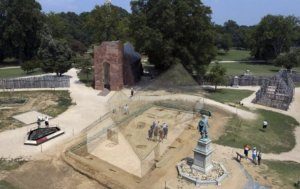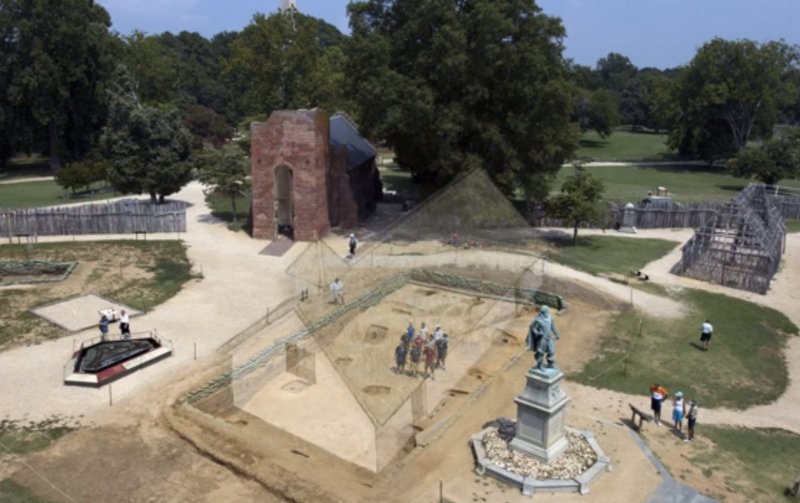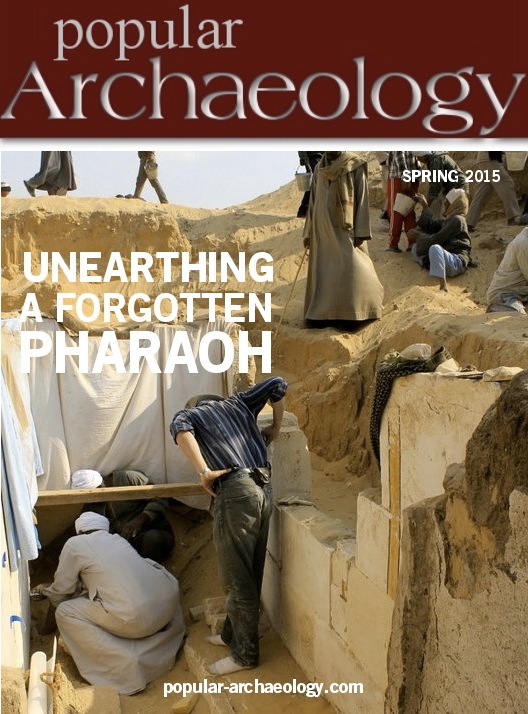
About five years after the footprint of the first Jamestown colony church was discovered, archaeologists and other specialists are busy partially reconstructing the structure. Believed to be the place where Pocahontas married the English tobacco planter John Rolfe, archaeologists hope that the reconstruction will provide the public with a real life, physical replica of the building that made history more than 400 years ago near the banks of the James River in southern Virginia. The church was built by the colonists in 1608 initially as a wood structure, then replaced by a brick structure later.
As stated by Jamestown Rediscovery Project Senior Staff Archaeologist David Givens in the project Dig Updates blog, “our intention here is not to recreate the entire church but give some notion of the space, so that when people are standing inside the church they can understand what the walls would have looked like and the fabric of the building.”
Based on the evidence recovered from the initial excavation of the church, archaeologists know that the building was constructed as a ‘mud and stud’ structure, where the walls of the building were constructed of simple wood posts in the ground with mud fill for the walls. Although the original wood construction has long vanished, the dimensions of the posthole traces in the soil and the overall measurements of the soil footprint of the structure matched the dimensions of the early church described in the record by William Strachey, Secretary of the colony. The modern construction crew has attempted to duplicate the construction process followed by the early colonists as much as possible, but are bonding the clay with a concrete/fiberglass compound to ensure visitor security. The original colonists used black rush from the surrounding marshes to obtain a similar bonding effect.
_________________________________________________
 Transparent graphic overlay in this image shows the dimensions and placement of the first Jamestown colony church, based on archaeological findings. Still screenshot from Youtube video, Experimental archaeology: bringing Jamestown’s early church to life, by Jamestown Rediscovery.
Transparent graphic overlay in this image shows the dimensions and placement of the first Jamestown colony church, based on archaeological findings. Still screenshot from Youtube video, Experimental archaeology: bringing Jamestown’s early church to life, by Jamestown Rediscovery.
____________________________________
See the video below and the project website for more detailed information.
__________________________________________
 Did you like this? Read more articles like this with a premium subscription to Popular Archaeology Magazine.
Did you like this? Read more articles like this with a premium subscription to Popular Archaeology Magazine.
In addition, the latest Popular Archaeology ebook is now available.
______________________________________________
Travel and learn with Far Horizons.
____________________________________________
 Popular Archaeology’s annual Discovery Edition eBook is a selection of the best stories published in Popular Archaeology Magazine in past issues, with an emphasis on some of the most significant, groundbreaking, or fascinating discoveries in the fields of archaeology and paleoanthropology and related fields. At least some of the articles have been updated or revised specifically for the Discovery edition. We can confidently say that there is no other single issue of an archaeology-related magazine, paper print or online, that contains as much major feature article content as this one. The latest issue, volume 2, has just been released. Go to the Discovery edition page for more information.
Popular Archaeology’s annual Discovery Edition eBook is a selection of the best stories published in Popular Archaeology Magazine in past issues, with an emphasis on some of the most significant, groundbreaking, or fascinating discoveries in the fields of archaeology and paleoanthropology and related fields. At least some of the articles have been updated or revised specifically for the Discovery edition. We can confidently say that there is no other single issue of an archaeology-related magazine, paper print or online, that contains as much major feature article content as this one. The latest issue, volume 2, has just been released. Go to the Discovery edition page for more information.
____________________________________________







